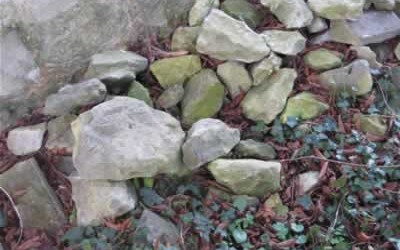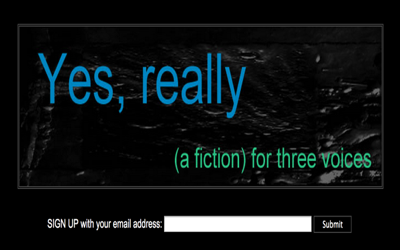 Originally published in Playing with Words: the spoken word in artistic practice, ed Cathy Lane, CRiSAP/RGAP/Cornerhouse 2008.
Originally published in Playing with Words: the spoken word in artistic practice, ed Cathy Lane, CRiSAP/RGAP/Cornerhouse 2008.
I was invited to write about pieces I have made in which I ‘play with words’. But, you know, I’d much rather point you in the general direction and let you explore them for yourself. In any case maybe my concerns are the other way around: it’s not so much playing with words, but the ‘play’ — the inherent give and take — between words, language, text and place that I find really fascinating. So I thought I’d write about my journey home instead, with just a few asides. And there are links.
The bus ride is still new to me. In the dark January evenings the country roads all look the same and the convoluted route, looping back and forth through several villages, makes things all the more confusing. There’s a long stretch of unlit road just before my stop. Here the bus gathers speed and hurtles past unseen fields and occasional signs that I can’t quite read through the dirty windows. If I’m not careful I lose track of where we are, and of when I should alert the driver to pull over. From the brightly lit interior I strain my eyes into the blackness, searching for a particular whitewashed wall that looms up on the left and tells me to ‘press the red button now’.
Two women in their early twenties regularly share part of the trip. I think they work in the health club. They talk about nothing of substance (or so it seems to me), simply batting back and forth freshly turned anecdotes unceasingly — boys, sex, love, life, money, life, love, sex, boys. They perform to each other in a make-do mix of imported and regional accents and idioms: this magpie vernacular cements their connection. I can only provide a taste, because you’d need to listen.
‘An’ we argued all the time before it all went tits up.’
‘He was owtside the Co-op last night wiv his mates. But I didn’t talk to him coz he had these really funky trainers on.’
‘So I TOWLD him no we’ve broken up, so you can’t be coming back and ’aving sum more of it now, can you?’
‘Just where duz he get off!’
When they leave, their absence creates a space that reminds me I’m almost halfway home. For a few moments I mentally recreate bits of their conversation, trying to retain the sounds so I can figure out what’s going on in that accent. And I remember that I grew up using speech patterns that were quite similar to theirs, even if at some early point I chose to abandon them for different materials.
The other night, a Friday, the driver stopped to let a couple of amiably inebriated male passengers get out to pee into a hedge. Too pissed to piss out of sight, their antics caused guffawing from the busload of observing passengers. I turned to joke with the workmen sitting behind — and heard both my voice and vocabulary slide slightly towards theirs. When I pick up the phone at work I do the opposite, sidestepping easily into administrative turns of phrase, ‘upgrading’ my accent, rolling reassuring competence across the lines. Playing the game. Playing along with the right words, and sound, for the job. It’s a common, almost unconscious social accommodation in situations where we know the landscape down to the smallest sign. But transplanted between countries, or even counties, that ostensibly speak the same lingua franca we lose the subtle to and fro that comes from knowing our place. Instead, the new patina on a once-familiar language brings something else in view.
In Anything from the minibar? I recorded a hotel receptionist who mouthed the conventional phrases of ‘customer service speak’ in the gentle sing-song of a Northumbrian accent. To me her accent was attractive, to her it was unheard. ‘Morning, checking out?’, ‘Two nights’ accommodation, that’s your total bill?’, ‘Has everything been alright for you?’ No, it hadn’t. And no, I didn’t ask her permission to record, I fear. But then she was already performing a script that wasn’t her own. And this piece is a celebration of her performance, and her voice.
I have worried about the ethics of this, but far less than in the case of a clandestine recording of a Dublin street-preacher, whose fire and brimstone oration was for everyone to hear but came from the heart. I decided his recording should have the right to remain silent. For me his accent and delivery were exotic, for him both were incidental.
The fields rush past outside. The wall I’m looking out for is made of clunch, a local limestone that has been quarried since Roman times in this part of England; it was once used extensively for building, despite its tendency to fracture or erode. Under my breath I experiment with my latest new word absentmindedly, ‘kuh…lunnnn….ch!’ ‘kerrrr…lunCH!’. I like saying it. The procedure involves anatomical operations that I can perform instinctively, but couldn’t name without looking them up: the springy impetus of tongue against roof of mouth, the dropped jaw vowel, and the satisfying ‘chuh!’ to seal the deal. A good solid word that (for me) sticks out at the moment, just like those odd lumps of chalk that stud Cambridgeshire clay.
Traditional buildings are born of compromise — a pragmatic ‘making do’ with what’s inherent in the landscape. They may eventually slip away but of course their materials are already memorialized in the local names for place — Chalk Vale, Quarry Lane, Pit Road. The materials of vernacular language are similarly cobbled together unthinkingly and, just as unthinkingly, discarded along the way. Sometimes all that’s left of the past are shards of vocabulary that mean far less now than they used to. Around the corner from my home, Limestone Close is a 1980s brick-built housing development.
Sometimes I miss the clunch wall and only realize this when the bus has passed my stop and the church comes into view. Once, nipping home through the churchyard (with my head bowed, but only against the rain) I noticed a poster flapping on the door. It announced a joint service between various denominations and was printed in English, Welsh and Gaelic. The Welsh I identified immediately — I could even try to read it out loud, approximating the sound of the words without knowing their meaning. But for me Gaelic is too strange to even attempt: although it uses familiar characters, there are all those unfamiliar diacritical marks to contend with. I know they change the sound — but I don’t know how. And words need sound.
In Trying to translate the pianist’s live, electronically processed sounds interweave with the digitally processed sounds of both Gaelic psalm-singing and speech from a radio documentary. The latter concerns the difficulties of translating texts from Gaelic into English: from one language with a vocabulary rooted in experiences that no longer exist to another whose vocabulary has moved away from the old ways of living. Trying to translate is a meditation on the interdependency of spoken language and experience, and on how easily the loss of one can lead to the loss of the other.
But, naturally, spoken words are just part of the story. An ‘old boy’ (as they call elderly men around these parts) gets on the bus most nights and stays up at the front chatting, completely ignoring the printed admonition: ‘do not stand or talk to the driver while the bus is in motion’. With his back to me, I can’t hear more than the murmur of his voice and the driver’s occasional short responses. But I see more than words alone can tell in the apparently nonchalant leaning stance of the passenger, who still wants to be one of the boys, rather than just some ‘old boy’. Perhaps he’s an ex-bus driver who knows the old cross-country routes like the back of his hand but is no longer required on this journey. He is trying to hang on to the banter of a place that has receded into his past. The driver knows; he accommodates the man out of kindness but his terse, impatient head movements give the game away. Although of course that’s just the story I chose to observe, and to tell now. It may not be true.
In In her own time I transformed my mother’s reminiscences about growing up during WWII, or ‘the war’ as she always calls it — in her mind, and in her words, this was the only war to touch her. In my piece, for much of the time, I chose to obscure her words. There are other stories in the way memories are re-articulated in the patterns of speech, especially when the patterns are imbued both with harmony and pitch, and remembering emotion. As she relates tales of crashed Spitfires, shrapnel popping in the garden hedge, and neighbours crushed to death in their homes, her slight London accent plucks the digital filters that tune her voice. But while you cannot always hear her words, for much of the time (I hope) you can hear her feeling. (The piece starts very quietly….listen.)
The bus pulls up at the crossroads, about ten minutes away from my non-verbal cue. Rather than demolish clunch walls, builders over the years have propped them up with added buttresses and bulging patches of later bricks and mortar. Wearing their histories visibly, the walls are silently eloquent: they are, to borrow Nabokov’s words, ‘transparent things, through which the past shines’.
A woman in her thirties presses the button and gets up, reluctantly closing her paperback as she makes for the doors. She has a slightly hippie dress sense that I like (though she might describe it with a less dated vocabulary). In the mornings she often sits down next to me, but we never speak. Her preferred reading is Arthurian, quest-based fiction. Heroes and heroines. I take a sidelong glance as she devours page after page, and imagine a stream of text spooling through her mind. I wonder what her internal reading voice sounds like, and if it imparts an inflection to the words that’s unique to her — and if that affects the meaning in subtle, unknowable ways. Her silent reading provides an inaudible virtual filter that’s a kind of ‘duet’ with the author’s text, itself a transliteration from inner voice to printed word. What is this voice that we create? Is it simply a speaking voice internalized, or is it something more directly hard-wired to conscious thought? How do the voices of internal discourse differ from speech, or even from one another? Where are we now? It’s still so dark.
Islands of One is my first sound-art piece in which I have used my speaking voice as material in conjunction with an autobiographical text. For me this was quite a difficult decision because on the one hand this could be deemed insufferably narcissistic, and yet on the other hand perhaps the only way to make art about phenomenal experience is to tell it how it seems, first person. And this is also the first piece I composed with headphone listening in mind. My voice, close up — right inside the listener’s head.
(This is a rather old flash piece from 2006 and might not work in your browser. Sorry.)
But proximity is a relative concept, one with a lot of ‘play’ in it. I currently spend a large part of my week reading and responding to email messages. Many are from strangers, whom I will never ‘hear from’ outside the written word. But it’s not only work-related acquaintances that I know this way, in fact I have more than a few good friends that I have only known online, ‘dis-voiced’. We have never met in the flesh, and probably never will, and we have never felt the need to phone. And yet, on the strength of their words, and mine — the way we write to each other — I feel we are quite close. And we are, I think. When another email arrives, or we ‘chat’ by text, it’s not only the words but the person who seems near — here, with me, inside my reading voice.
In Yes, really, a venture into fiction delivered via email, I have attempted to play with the intimacy of the Inbox. A counterpoint of three voices addresses the reader; each voice is written in a distinctive style and tone, each expresses experience through a particular sensibility, and each requires the reader to take on a ‘role’, and to interact by reading. There are no sounds, other than those created inside the reader’s mind. For this kind of art, no speakers are required.
In a growing number of cases, people perform significant aspects of their social — and emotional — lives on the internet. That small word ‘on’ gives a clue to its place: the same connective preposition used for radio, phone, or TV. A place to be — or to feel oneself to be — with others. And on the internet we are constantly creating voices — reading or writing online epistolary communications that speak through the imagined (or, still less often, the real) sound of language And it’s all ‘up close’. Every message gains local significance. Even the Chinese spam mail, rendered as a series of question marks by my anglo-email software, is a mute interrogation.
The virtual and the real are concepts whose unfinished edges increasingly rub against each other. And the relationship between the two seems ever more dynamic as the notion of what people call home expands to include the insubstantial. And I wonder if one day these concepts, and their words, will be discarded as inappropriate building materials. Perhaps they will only remain in the names for places that were more important in the past. What seems solid now may fracture and erode with time, and ultimately evanesce. Something will come along.
And there it is: the white clunch wall. The dishevelled remnant of a boundary long fallen out of use. It marks the place where I get off.
Katharine Norman, January 2008.
If any of these links are broken, please email me for directions.
Some routes
Crystal, David (1997, 2nd ed.). The Cambridge Encyclopedia of Language. Cambridge: Cambridge University Press.
Heller-Roazen, Daniel (2005). Echolalias: On the Forgetting of Language. New York: Zone Books.
Milne, Esther. Email and Epistolary technologies: Presence, Intimacy, Disembodiment. http://journal.fibreculture.org/issue2/issue2_milne.html (accessed January 2008)
Nabokov, Vladimir (2002, written in 1972). Transparent things. New York: Vintage Books.
Norman, Katharine (2004). Sounding Art: Eight Literary Excursions through Electronic Music. Aldershot, UK and Vermont, USA: Ashgate.
The Corpus of Romanesque Sculpture in Britain and Ireland – Preface to Cambridgeshire
(accessed October 2014)

